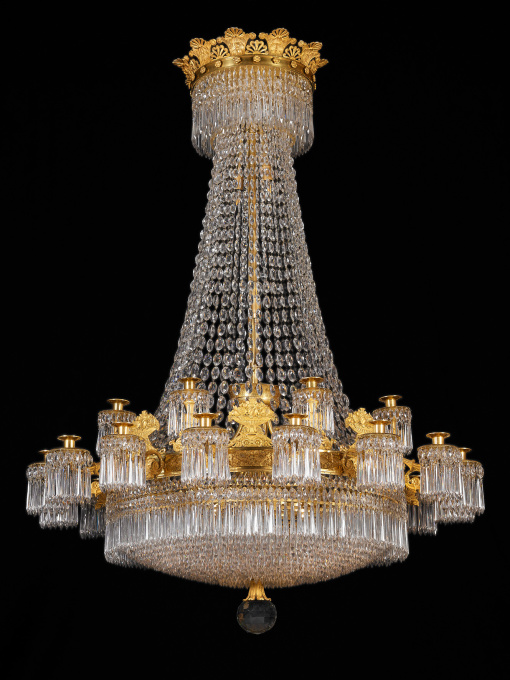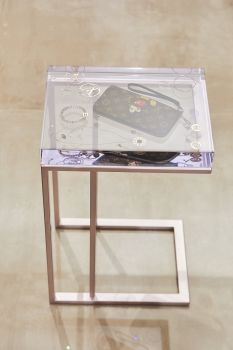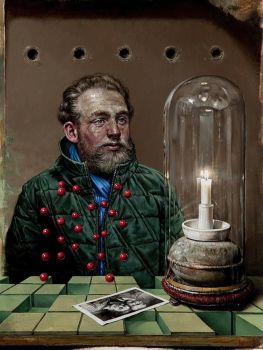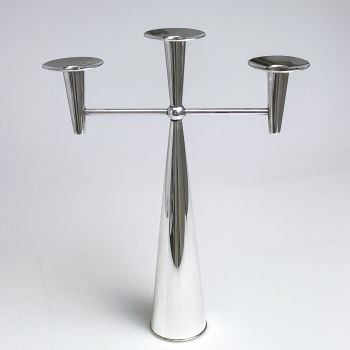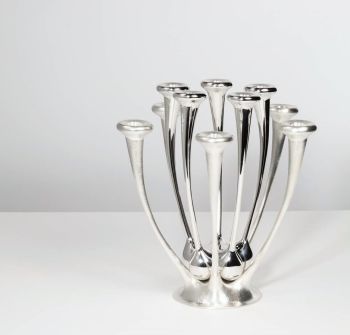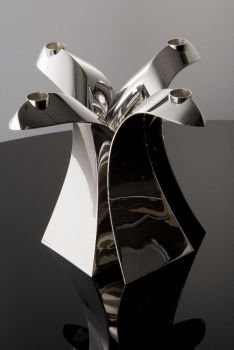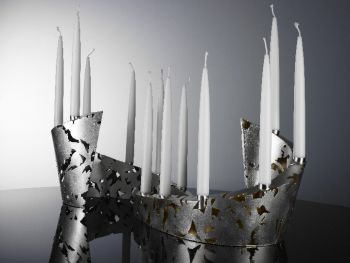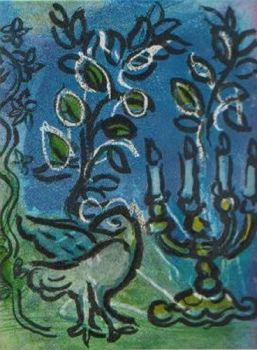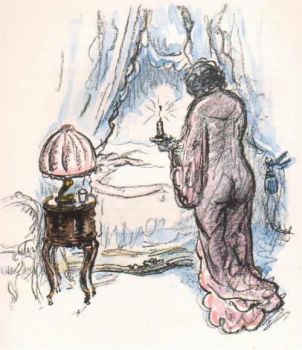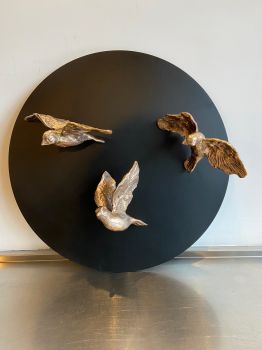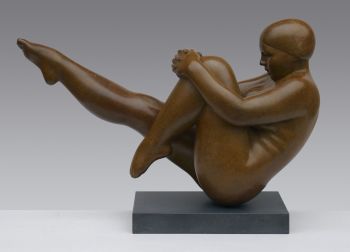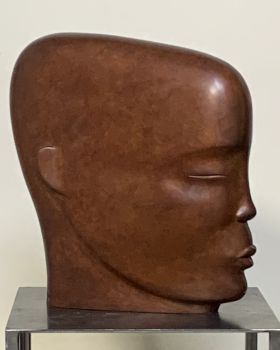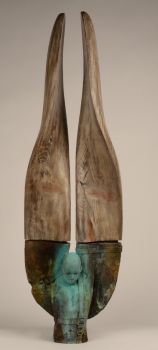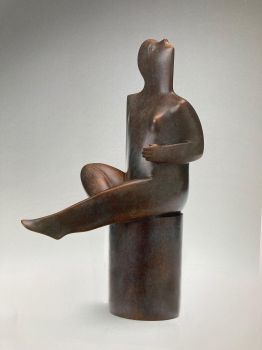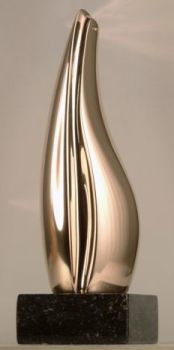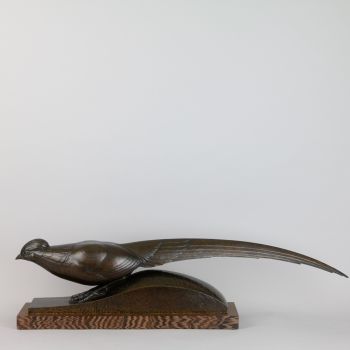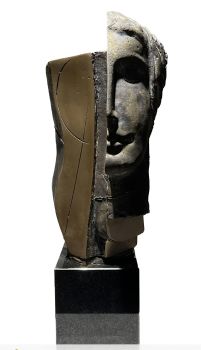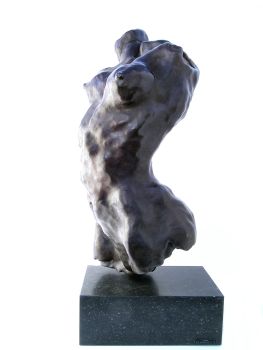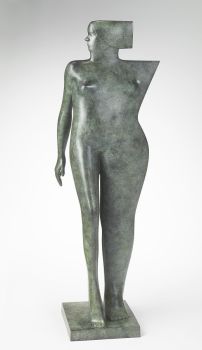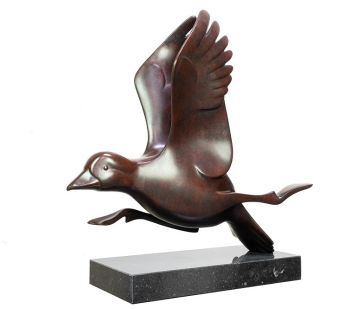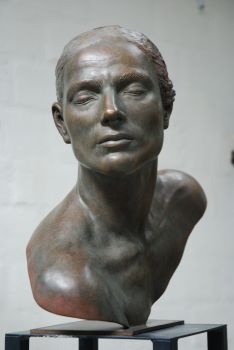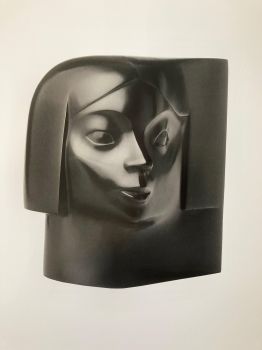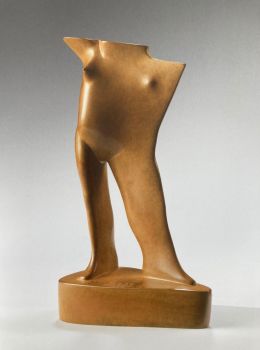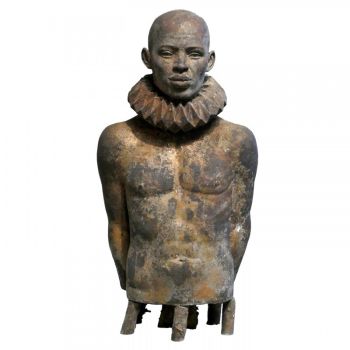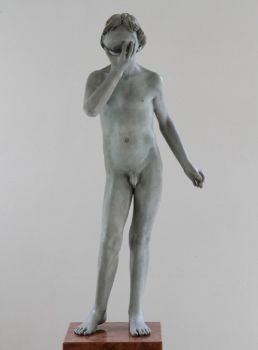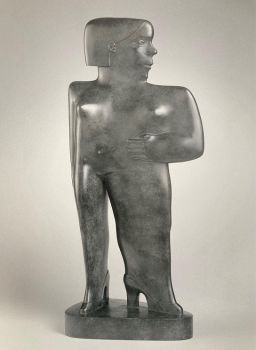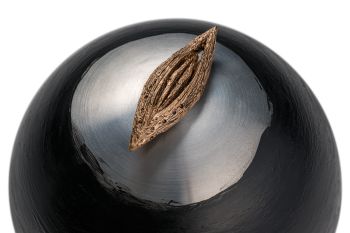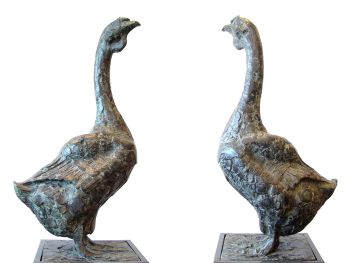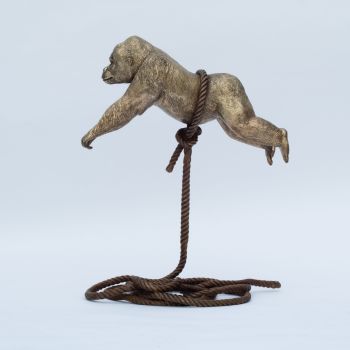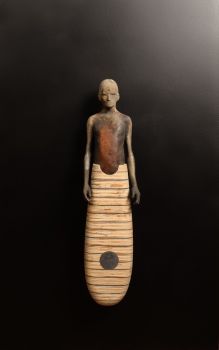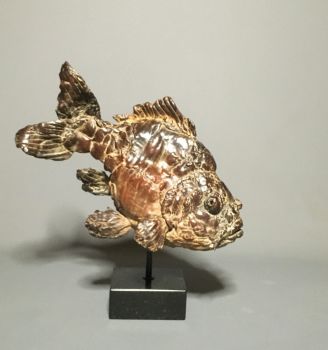A large Empire 24-light Chandelier attributed to Claude Galle 1815
Claude Galle
BronceCristalMetalPiedra preciosa
160 cm, ø 120 cm
ConditionExcellent
Actualmente no disponible a través de Gallerease
- Sobre la obra de arteA large chandelier with 24 lights in two tiers from the French Empire period. The crown at the top of the chandelier is decorated with rosettes on the sides and decorations of alternately stylized palm leaves and lotus leaves. From this crown several rows of cut crystal icicles are hanging down. Forty-eight cords of cut crystal beads run down from the crown and are connected to the main tier.
The main tier, with 16 lights, is decorated with appliques with leaf and fruit motifs. The S-volute shaped arms end in plain shaped candle holders. From the drip trays a double row of crystal almonds and icicles is hanging down. Between every other light, on top of the main tier there are appliques of fruit baskets. The remaining spaces contain another row of eight lights. The dripping trays of these candle holders are decorated with cut crystal in the same manner as the main tier. The lower part of the circle is decorated with two rows of almond shaped crystal beads and 17 rows of crystal icicles. The centre is formed by a faceted crystal ball in a gilt bronze setting decorated with stylized leaf motifs.
A leader in his field, Claude Galle was born at Villepreux near Versailles who moved to Paris to begin an apprenticeship under the fondeur, Pierre Foy. In 1784 Galle married Foy's daughter and on his father-in-law's death in 1788 Galle took over the workshop, which he built up into one the finest of its kind with a workforce of about 400 craftsmen. Galle promptly moved the business to Quai de la Monnaie (renamed Quai de 1'Unité) and from 1805 operated from 60 Rue Vivienne. First listed in the trade registers in 1784 he was received as a maître-fondeur in 1786 and promptly gained the first of many commissions from the Garde-Meuble de la Couronne under Jean Hauré from 1786-88. He is known to have collaborated with Pierre-Philippe Thomire, amongst others, and was responsible for the majority of bronzes d'ameublement supplied during the Empire to Château de Fontainebleau. Other Imperial commissions included the supply of numerous vases, ewers, light fittings, figural clock cases and other fine bronze furnishings for the palaces at Saint-Cloud, the Trianons, Tuileries, Compiègne, Rambouillet and a number of the Italian palaces including Monte Cavallo, Rome and Stupinigi near Turin. Yet despite numerous important commissions Galle was often in debt, partly on account of his lavish life style and also since many of his clients, such as Prince Joseph Napoleon, failed to pay him. After his death Galle's business was reopened and prospered under his son, Gérard-Jean Galle (1788-1846). His work can be found among the world's finest collections including those mentioned above as well as the Musée National de Château de Malmaison, the Musée Marmottan in Paris, the Museo de Relojes at Jerez de la Frontera, the Residenz Munich and the Victoria and Albert Museum in London. - Sobre el artistaClaude Galle nació en Villepreux, cerca de Versalles. Se trasladó a París para comenzar un aprendizaje con el fondeur Pierre Foy. En 1784, Galle se casó con la hija de Foy y cuando el propio Foy falleció en 1788, fue Galle quien se hizo cargo de su taller y lo convirtió en uno de los mejores de su tipo, empleando a unos 400 artesanos. En 1805, Galle trasladó su negocio a Quai de la Monnaie y operó desde 60 Rue Vivienne. En 1786 ya se había convertido en Maître-Fondeur, y en 1786-1788 ganó el primero de muchos encargos de la Garde-Meuble de la Couronne, bajo Jean Hauré. Se sabe que colaboró con Thomire y fue responsable de la mayoría de los bronces d’ameublement suministrados durante el Imperio al castillo de Fontainebleau. Sus otros encargos imperiales incluyen el suministro de numerosos jarrones, jarras, relojes figurativos, accesorios de iluminación para varios otros castillos franceses, así como palacios italianos. A pesar de su popularidad, Galle a menudo estaba endeudado debido a un estilo de vida lujoso y al hecho de que muchos de sus clientes no le pagaban. Después de la muerte de Galle, su hijo, Gérard-Jean Galle (1788-1846) continuó su taller. Su obra se encuentra entre las mejores colecciones del mundo, como las del Musée National de Château de Malmaison y el Victoria and Albert Museum de Londres.
Artwork details
Categoría
Tema
Estilo
Material y Técnica
Related artworks
Artista Desconocido
Pulseira de diamante do século 18 com entalhes de 2.000 anos1790
€ 23.000Adin Fine Antique Jewellery
 curada por
curada porDanny Bree
Artista Desconocido
Set of eight gouache drawings1799 - 1801
Precio a consultarRobert Schreuder Antiquair
Artista Desconocido
Set Franse Empire Pendules / Empire Lectura penduleearly 19th
Precio a consultarKuipers Kunst & Antiek
1 - 4 / 15Artista Desconocido
PAREJA DE ANTORCHAS O VELAS DE TECA DORADA Y LACADA INDONESIA18th century
Precio a consultarZebregs & Röell - Fine Art - Antiques
Artista Desconocido
Japanese transition-style lacquer coffer 1640 - 1650
Precio a consultarZebregs & Röell - Fine Art - Antiques
1 - 4 / 24- 1 - 4 / 10
- 1 - 4 / 24

